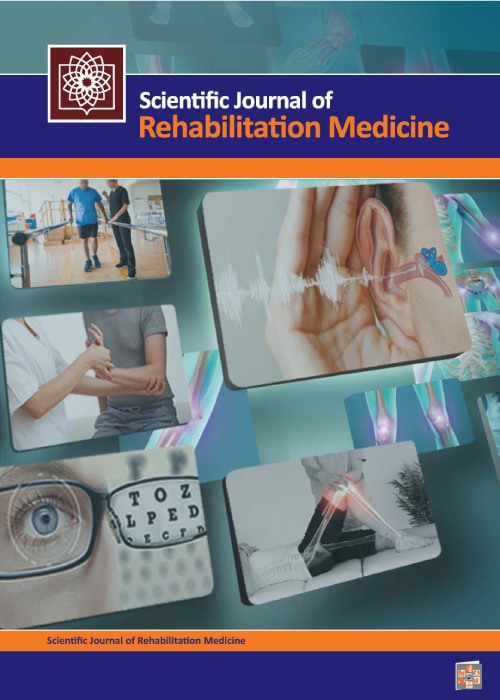Comparison of the Electromyographic Activity of Trunk and Hip Muscles during Standing in Females with and without Swayback Posture
Author(s):
Article Type:
Research/Original Article (دارای رتبه معتبر)
Abstract:
Background and Aims
Swayback posture is one of the spinal abnormalities and one of the important causes for the pathology of the Lumbo-Pelvic region. However, due to inadequate information about the method of evaluation among researchers, and also lack of agreement about the muscular changes, less attention has been paid to muscle activity in this posture. Therefore, the purpose of the current study was to compare the electromyographic activity of trunk and hip muscles during standing in females with and without swayback posture.Materials and Methods
For this purpose, 30 inactive females selected using purposive sampling method were assigned into two groups of swayback posture and control. Pelvic tilt and sway angles were obtained with camera and electromyography signals from the thoracic and lumbar erector spine, lumbar multifidus, gluteus maximus, medial hamstring, rectus abdominis, external oblique abdominal, and rectus femoris muscles during standing posture.Results
The results of independent t-test demonstrated significant differences between swayback posture and control groups in the pelvic tilt (p 0/001) and sway angles (p 0/001). Also, no significant differences were shown between the two groups in the electromyographic activity of erector spine, lumbar multifidus, rectus abdominal, external oblique, and hip extensor muscles during standing (p > 0/05). Moreover, there was a significant difference between the two groups in the amounts of activity of the rectus femoris muscle (p ꞊0/012) and internal oblique (p ꞊0/018). Conclusion
The findings of the present study demonstrated that there are similar muscle contractions in the trunk and hip muscles between two groups of sway back posture and control, which contrary to the previous studies, the perception of passive swayback posture has been somewhat violated. Hence, this can provide a better understanding of the sway back posture for trainers and athletes in assessment and rehabilitation.Keywords:
Language:
Persian
Published:
Scientific Journal of Rehabilitation Medicine, Volume:8 Issue: 2, 2019
Pages:
119 to 128
magiran.com/p2002594
دانلود و مطالعه متن این مقاله با یکی از روشهای زیر امکان پذیر است:
اشتراک شخصی
با عضویت و پرداخت آنلاین حق اشتراک یکساله به مبلغ 1,390,000ريال میتوانید 70 عنوان مطلب دانلود کنید!
اشتراک سازمانی
به کتابخانه دانشگاه یا محل کار خود پیشنهاد کنید تا اشتراک سازمانی این پایگاه را برای دسترسی نامحدود همه کاربران به متن مطالب تهیه نمایند!
توجه!
- حق عضویت دریافتی صرف حمایت از نشریات عضو و نگهداری، تکمیل و توسعه مگیران میشود.
- پرداخت حق اشتراک و دانلود مقالات اجازه بازنشر آن در سایر رسانههای چاپی و دیجیتال را به کاربر نمیدهد.
In order to view content subscription is required
Personal subscription
Subscribe magiran.com for 70 € euros via PayPal and download 70 articles during a year.
Organization subscription
Please contact us to subscribe your university or library for unlimited access!



